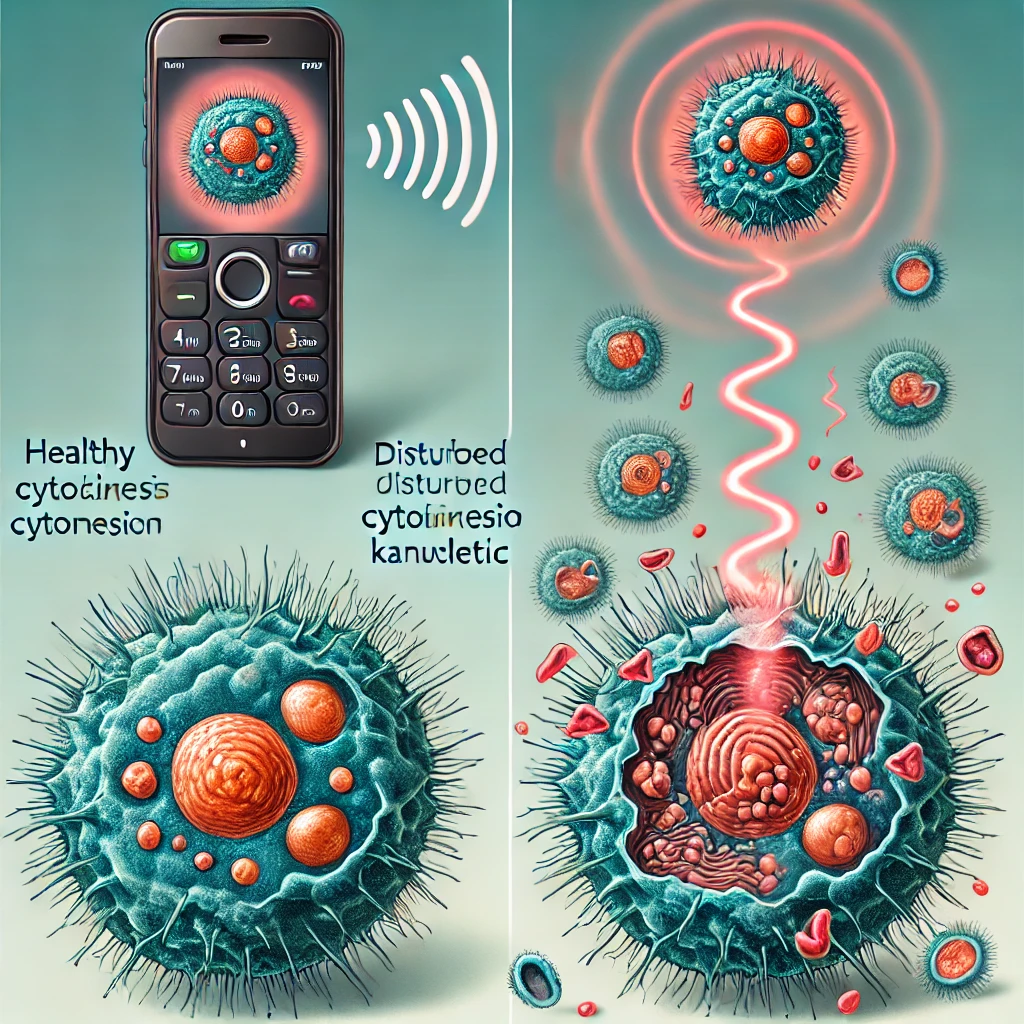Mobile Phone Radiation: Disturbing Cytokinesis and Causing Cell Death in Buccal Cells – Key Findings from a Controlled Human Study
Introduction
In today’s world, mobile phone usage is ubiquitous, raising global concerns about the potential adverse health effects of electromagnetic fields (EMF) emitted by these devices. Despite extensive research, the molecular mechanisms underlying these effects remain controversial and poorly understood. The recent study titled “Mobile phone specific radiation disturbs cytokinesis and causes cell death but not acute chromosomal damage in buccal cells: Results of a controlled human intervention study” aims to shed light on these mechanisms by providing controlled, experimental evidence.
Research Objectives and Methodology
Objectives of the Study
The primary objective of this study was to investigate the potential genotoxic and cytotoxic effects of mobile phone radiation on human buccal cells under controlled conditions. Specifically, the researchers aimed to determine whether such radiation induces chromosomal damage and other nuclear anomalies in these cells.
Description of the Methodology Used
- Study Design: This controlled human intervention trial involved 42 participants exposed to low (0.1 W/kg) and high (1.6 W/kg) doses of a UMTS signal for 2 hours daily over 5 consecutive days.
- Exposure Control: Participants used special headsets to receive defined doses of HF-EMF on either the left or right side of the head, with exposure conditions managed in a double-blind fashion.
- Cell Collection: Buccal cells were collected from both cheeks immediately before the exposure and three weeks after the final exposure. This timeline allowed for the assessment of delayed effects on cell division and cytotoxicity.
- Evaluation: Nuclear anomalies, including micronuclei (MN), nuclear buds (NB), binucleated (BN), karyolitic (KL), and other cell types, were scored in 2000 buccal cells per sample using DNA-specific stains.
Key Findings
Summary of the Main Findings
The study yielded several critical insights:
- Cytokinesis Disturbance: A significant increase in BN cells, indicative of disturbed cell division, was observed.
- Cell Death: A marked increase in KL cells, which are indicative of cell death, was noted in cells from the more exposed side.
Detailed Explanation of Significant Results
- Disturbance of Cytokinesis: The presence of binucleated cells (BN) suggests that mobile phone radiation interferes with the normal process of cell division. This could have long-term implications for tissue health and function.
- Cytotoxic Effects: The increase in karyolitic (KL) cells points to cell death induced by radiation exposure. This finding is critical as it highlights the potential for mobile phone radiation to cause direct harm to cells, independent of chromosomal damage.
Implications of the Findings
Discussion on the Broader Implications
The findings of this study have several broader implications:
- Health Risks of Mobile Phone Radiation: The study suggests that while mobile phone radiation may not cause immediate chromosomal damage, it can disrupt cellular processes and induce cell death. This could potentially contribute to long-term health issues, including cancer, as disturbed cytokinesis and cell death are known precursors to neoplastic transformation.
- Need for Updated Safety Guidelines: Given the evidence of cytotoxic effects at commonly used radiation levels, there is a pressing need to revisit and potentially revise safety guidelines for mobile phone use, especially concerning long-term exposure.
- Future Research Directions: The study underscores the necessity for further research into the non-chromosomal effects of EMF, such as cytokinesis disturbance and cell death, and their long-term health consequences.
Potential Impact on the Field
This study provides a novel perspective on the effects of mobile phone radiation, emphasizing the importance of looking beyond chromosomal damage to understand the full scope of radiation-induced cellular changes. It sets the stage for more comprehensive research that could inform public health policies and safety standards.
Conclusion
In conclusion, the controlled human intervention study “Mobile phone specific radiation disturbs cytokinesis and causes cell death ” provides valuable insights into the non-genotoxic effects of mobile phone radiation. By demonstrating the disruption of cell division and induction of cell death, this research highlights potential long-term health risks and underscores the need for updated safety guidelines and further investigation into the molecular mechanisms of EMF effects.
References
- Kundi, M., Nersesyan, A., Schmid, G., Hutter, H.-P., Eibensteiner, F., Mǐsík, M., & Knasmüller, S. (2024). Mobile phone specific radiation disturbs cytokinesis and causes cell death but not acute chromosomal damage in buccal cells: Results of a controlled human intervention study. Environmental Research, 251, 118634. Available online at Elsevier.








